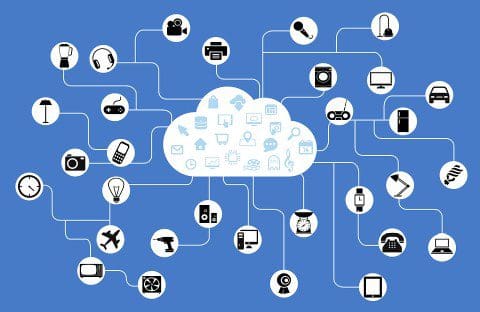What the Next Generation of IoT Sensors Have in Store
This post is an overview of some of the next-generation IoT sensors, and what they could mean for our future.
The Internet of Things (IoT) is everywhere, and relies on delicate or robust sensors to connect it to its host, the internet, take in the data needed to make the world go round, and transmit it to the right hands so good choices, creative approaches, and some quick-saves can be made.
Here are a few of the latest IoT sensors unveiled, and what they could mean for our future.
1. Data Network Sensors from B+B Smartworx
A black box with an antenna reaching upwards, the data networking sensors created by B+B Smartworx may not seem very futuristic, but they’re undeniably valuable for all things concerning data security and storage. Much like an emergency generator, this device operates without the need for wires, and should it find itself with a few unfortunately damaged nodes, it can still continue its job transmitting data to the cloud or data centers. In addition, it’s renowned for saving power, making it both the safe and economic option.
2. Temperature Sensors from B+B SmartWorx
The one rule of electronics across the board is, “Don’t let them overheat.” Glitches, poor performance, and possible death await the device you leave to bake. Yet you may be overspending on electricity trying to keep your electronics cool, or may be unaware how truly hot they can become. Temperature sensors from B+B SmartWorx can be attached directly to your cables, and will transmit information on your devices’ temperatures with constant updates. This could save you from a meltdown, or ensure you save some money on your electric bill.
3. Condensed Retail Sensors from RetailNext
More and more retailers are trying to better connect with their customers online and in their stores. The technology exists to allow retailers to determine where a customer is in a store and what they’re looking for, and at this point, they can connect to the customer’s phone via Bluetooth or Wi-Fi to offer specialized deals. However, while this is both convenient and futuristic, utilizing the technology requires countless devices and wires spanning the store, which is both distracting and displeasing to the eye. RetailNext created a new kind of in-store sensor, one that fits in a single small box mounted to the ceiling. Faster, more compact, and flexible, this IoT sensor makes it possible to have ease and style in one.
4. Printed Pressor Sensors from Hoffman+Krippner
Whether it’s used to make hybrid digital and physical music or something far more advanced, Hoffman+Krippner has created advanced printed pressure sensors that transmit information on how delicately or forcefully they’re touched. These ultra-thin strips set on a circuit board open doors for useful possibilities in safety and health, as well as entertainment.
5. Precise Impact Sensors from Acellent
When you get in a car wreck, you want to be sure your automobile truly passed the crash test before it was ever allowed out on the road. These tests were conducted long before the IoT, but the internet is only making life safer, especially with precise impact sensors from Acellent and the data stored on a flash storage array. A few tiny strips placed across a car will gather immediate data on the force of impact during a wreck, transmit the exact location of hidden damages, and then pinpoint general weak points that developers should pay attention to, creating safer cars.
6. Flexible Sensors from SpectraSymbol
The Internet of Things is connecting your clothes, your coffee pot, and even your body with the World Wide Web, but even the best sensor will be rendered useless if it breaks or bends in a bad way. Especially since the medical industry is developing IoT patches for patients to wear on injured muscles and joints, having a sensor that can move with its owner to detect range of motion and movement is valuable. That’s where SpectraSymbol has come up with a solution by creating a highly bendable and flexible sensor, which is twice as durable and much more agile.
7. Photodiodes from Isorg
Airplanes become more advanced all the time, but whether it’s human error or a problem with the machine, if a portion of the plane is faulty or performs badly in harsh conditions, it can mean the loss of life. Making sure that the testing phase is as thorough and accurate as possible is paramount. Isorg has created photodiodes, an IoT sensor that resembles a small compass, which is capable of gathering information and then transmitting the data immediately in regards to the integrity of the machine.

Related:
- Data Science for Internet of Things course, Online or London
- Cognitive Computing: Solving the Big Data Problem?
- Debunking Big Data Myths. Again.

